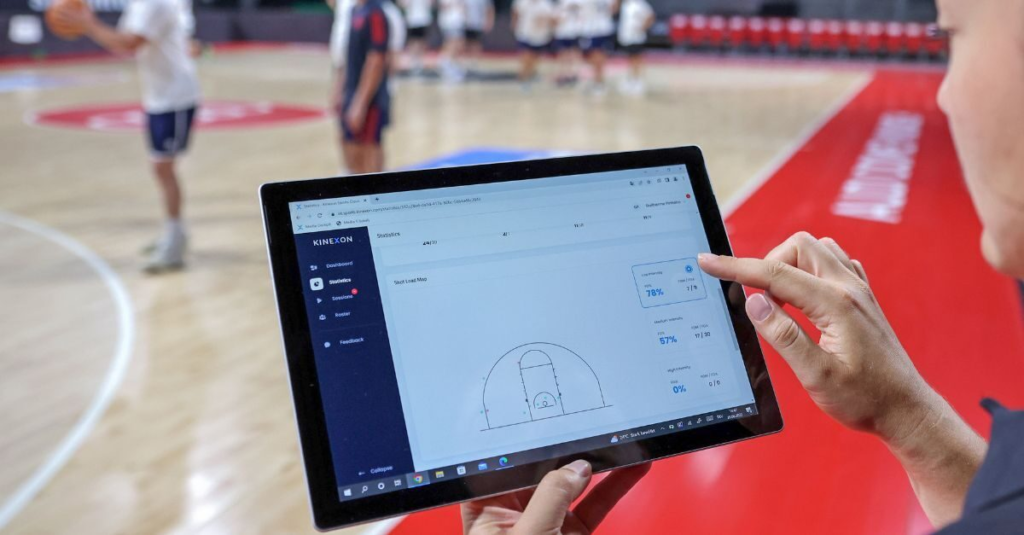In the realm of professional sports, speed is often known as the ultimate advantage. Athletes across various disciplines strive for that split-second edge that can make the difference between success and defeat. The science of speed is a all-round search, encompassing biomechanics, physiology, and the latest training techniques designed to maximize performance. Understanding how speed is generated and improved not only aids athletes in achieving their peak potential but also provides skills into how they can sustain their performance over time. This blog delves into the intricate science behind speed and the training methodologies that professional athletes employ to surpass in their respective sports.

Biomechanics: The Repair of Motion
At the core of speed lies the science of biomechanics, which investigates the physical principles governing human movement. Athletes utilize their bodies’ structures in complex ways to achieve maximum velocity. Key components of biomechanics include stride length and frequency, 토토사이트 both crucial for determining how fast an patient can run or move. Stride length refers to the distance covered in one complete stride, while frequency is the number of strides taken per second. The interplay between these two elements ‘s very important; improving one often requires adjustments to the other. For instance, sprinters may focus on enhancing their stride length while maintaining a high frequency to maximize their speed. Understanding these repair allows coaches and athletes to tailor training sessions that enhance specific areas of performance, ultimately leading to faster times and improved outcomes.
Physiology: Understanding Energy Systems
The bodily underpinnings of speed involve various energy systems that fuel particular sports performance. Primarily, athletes rely on three energy path ways: the phosphagen system, the glycolytic system, and the oxidative system. The phosphagen system provides immediate energy for short bursts of activity, lasting approximately 10 seconds—ideal for sprinters. As intensity increases, the glycolytic system kicks in, providing energy for moderate efforts lasting up to two minutes. Finally, the oxidative system is utilized for longer-duration activities. Athletes must train these systems specifically to enhance their performance. For example, interval training can significantly improve an athlete’s anaerobic capacity, making it possible for longer stays of high-intensity efforts. By integrating these principles into training, athletes can condition their bodies to perform at peak levels, enabling them to achieve remarkable rates during challenges.
Training Techniques: Modern Solutions to Speed Enhancement
In the pursuit of speed, professional athletes adopt various training techniques designed to maximize their performance. Plyometrics, for example, involve beyond expectations movements that enhance power and speed. This form of training draws attention quick, dynamic actions that recruit fast-twitch muscle fibers, needed for sprint and jumping. Incorporating plyometric exercises into a training routine can significantly improve an athlete’s capacity generate force quickly, translation into increased speed on the field or track. Additionally, strength training plays a vital role in speed enhancement. By building muscle strength and endurance, athletes can improve their capacity generate force up against the ground, which is crucial for achieving faster rates. Coaches now employ periodization strategies, cycling through levels of training that focus on strength, speed, and recovery, ensuring athletes develop holistically while preventing overtraining.
Nutrition and Recovery: The Unsung Heroes of Speed
While biomechanics and training techniques are pivotal in enhancing speed, the value of nutrition and recovery cannot be overlooked. Proper nutrition fuels an athlete’s performance, providing the mandatory energy to sustain high-intensity workout sessions. Carbohydrates, protein, and fats all play significant roles in an athlete’s diet. Carbohydrates serve as the primary fuel source, particularly for high-intensity efforts, while protein support muscle recovery and growth. Additionally, hydration is necessary for maintaining optimal performance levels. Recovery strategies, such as sleep, active rest, and therapeutic modalities, are equally essential in increasing speed. A well-structured recovery regimen allows athletes to repair and rebuild their muscles, ensuring they are prepared for subsequent workout sessions. Therefore, a thorough approach to training that integrates nutrition and recovery strategies is fundamental for athletes seeking to enhance their speed effectively.
The Role of Technology: Measuring and Analyzing Performance
In recent years, technology has revolutionized the way speed is measured and analyzed in professional sports. Wearable devices, motion capture systems, and performance analytics software have provided coaches and athletes with unheard of skills into their training and performance. These tools enable athletes to track their speed, stride length, and other critical metrics in real time, making it possible for data-driven adjustments to their training sessions. Furthermore, video analysis can highlight biomechanical inefficiencies that may be working against an athlete’s speed. Coaches can use this data to refine techniques, improve performance, and mitigate the risk of injury. As technology continues to advance, its integration into particular sports training will likely become increasingly sophisticated, making it possible for more personalized and effective training programs tailored to individual athletes’ needs.
Conclusion: The future of Speed in Professional Sports
The science of speed is a dynamic field that continually evolves as research and technology advance. Athletes who understand the intricate relationship between biomechanics, physiology, training techniques, nutrition, and recovery are better equipped to enhance their performance. As we look to the future, the integration of innovative training methods and advanced technology will likely further push the border of particular sports performance. Whether on the track, field, or court, the pursuit of speed remains a defining feature of professional sports, driven by a deep understanding of the science behind it. As athletes and coaches continue to explore these principles, the potential for remarkable achievements in speed and performance will only grow, captivating audiences and inspiring future generations of athletes.